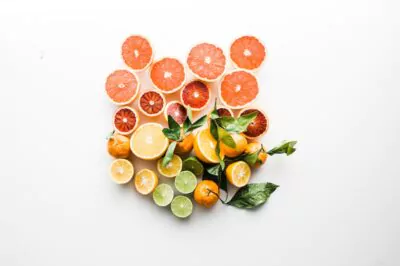It’s a new year. New chances to take. New opportunities to make. New intentions to set. But invariably, the one thing that remains consistent each January 1, is the overuse of the word “diet”. This four-letter word has become erroneously synonymous with another four-letter word – “thin”. More often than not, when someone says they are going on a diet, their reasoning is to lose weight and become thinner. While this isn’t necessarily “wrong”, the word diet is better used to define a way of eating for optimal health and meeting your body’s goals, whether or not that includes weight. Things like fatigue and joint pain are other factors that a revised diet could improve.
What is a Ketogenic Diet?
The simplest definition of a ketogenic diet is a low carb, moderate protein, and high fat diet which puts the body into a metabolic state known as ketosis. Great. What the heck is ketosis? Ketosis is when your body enters a state where it is burning fats instead of glucose for energy, resulting in a build-up of acids, a by-product of this process, called ketones. In small amounts, ketones are indicators of fat being broken down and are eliminated in urine.
You see your body is used to running on glucose as a main energy source. Glucose is found in sugary foods, like fruits or yogurt, or in starchy foods, like bread and pasta. The body breaks glucose down and either uses it for fuel or stores it.
When you are on a ketogenic diet, you are essentially denying your body the glucose for energy and thereby encouraging it to find alternative ways to meet energy demands. The next place your body looks is fat stores. Knock, knock… glucose isn’t home, can I crash here instead? Over time, your body learns to become a fat burning machine rather than a sugar burning one and eliminating excess stores of both fat and glucose.
5 Health Benefits of a Ketogenic Diet
“Ok… I think I understand WHAT a ketogenic diet is… So why do I want to try it?”
Well, maybe you do, maybe you don’t, but here are some of the health benefits that have been studied around establishing a ketogenic diet, at least short term.
1—Increased energy. A ketogenic diet provides a more steady, consistent energy source that allows you to skip that midday “crash” feeling and remain energized.
2—Weight loss. A ketogenic diet typically consists of foods that are more filling and therefore cause you to eat less. As your insulin levels drop, you begin burning more fat, leading to an obvious weight loss.
3—Control blood sugar. By cutting back on carbs, your body’s blood sugar levels lower and are easier to control. Keeping consistent blood sugar levels provides huge benefits to pre-diabetic or Type II diabetics.
4—Appetite suppressant. Meals that are high in carbs often don’t leaving a lasting fullness in your belly. Healthy fats are naturally more satiating, reducing the cravings and hunger pains.
5—Mental Focus. Excess carbs can cause cloudy thinking, whereas lowering your carbs eliminates the blood sugar spikes and keeps you more even kiln. Ketones created from this are a great source of brain fuel. With the ketogenic diet, you are also increasing your intake of healthy fatty acids that benefit our brain’s functions. All this considering, it can easily result in improved focus and concentration.
Additionally, some studies have been conducted that suggest a ketogenic diet can significantly improve ailments such as epilepsy, high cholesterol, blood pressure, acne and Alzheimer’s. Like anything affecting health, proper administration, consistent doctor visits and body awareness are all key to be successful and improving your health without negative side effects.
What Can You Eat
Since this diet is based largely on maintaining a ratio of carbs, fats and proteins, there are plenty of foods you can and cannot eat. While there is some minor discrepancy depending on your source, the common ratio seems to be 65% fats, 35% proteins and 5% carbohydrates. Here is a list of foods to avoid and foods that are appropriate for maintaining a ketogenic diet.
Foods to Avoid
Grains—wheat, corn, rice, cereal, pasta
Sugar—honey, agave, maple syrup, soda, fruit juice, smoothies, cake, ice cream, candy, etc.
Fruit—All fruit, except small portions of berries like strawberries.
Root vegetables and tubers—Potatoes, sweet potatoes, carrots, parsnips, etc.
Legumes—Peas, kidney beans, lentils, chickpeas, etc.
Low-fat or diet products—These are highly processed and often high in carbs.
Some condiments or sauces—These often contain sugar and unhealthy fat.
Unhealthy fat—Limit your intake of processed vegetable oils, mayonnaise, etc.
Alcohol—High in carbs
Foods to Eat
Meats—fish (especially fatty fish like salmon and tuna), beef, lamb, poultry, egg
Leafy Greens—spinach, kale
Cruciferous vegetables—broccoli, cauliflower
High fat dairy—hard cheeses, high fat cream, butter, unprocessed cheese (cheddar, goat, cream, blue or mozzarella).
Nuts and seeds—almonds, walnuts, flaxseeds, pumpkin seeds, chia seeds, etc.
Avocado and berries—raspberries, blackberries, and other low glycemic impact berries
Sweeteners—stevia, erythritol, monk fruit, and other low-carb sweeteners
Other fats—coconut oil, high-fat salad dressing, saturated fats, etc.
What Are Some signs that I’ve Reached Ketosis?
Some people opt to measure ketosis via strips that test your blood or urine, although these can be highly inaccurate. Perhaps a better, more cost-effective way, is to track physical symptoms.
Increased Urination—Keto is a natural diuretic causing you to urinate and excrete the ketones more frequently.
Dry Mouth— The increased urination leads to dry mouth and increased thirst.
Bad Breath—Gross, but don’t worry; it’s temporary. Acetone is a ketone body that partially excretes in our breath. It can smell sharp like overripe fruit.
Reduced Hunger and Increased Energy—After your body adjusts to this new way of eating, you’ll notice more energy and focus and less hunger.
Make sure to drink plenty of water and exercise regularly, two key components in any healthy diet. Just like most things in life, too much of a good thing can lead to bad results. Make sure to monitor and consult your doctor regularly to avoid negative or harmful side effects which negate the purpose of your diet.
Resources:
https://www.medicalnewstoday.com/articles/180858.php
https://ketodash.com/ketogenic-diet
https://www.healthline.com/nutrition/ketogenic-diet-101#section4
https://www.ruled.me/guide-keto-diet/
https://resetfactor.com/a-breakdown-of-the-fatproteincarb-ratio-for-a-ketogenic-diet/







